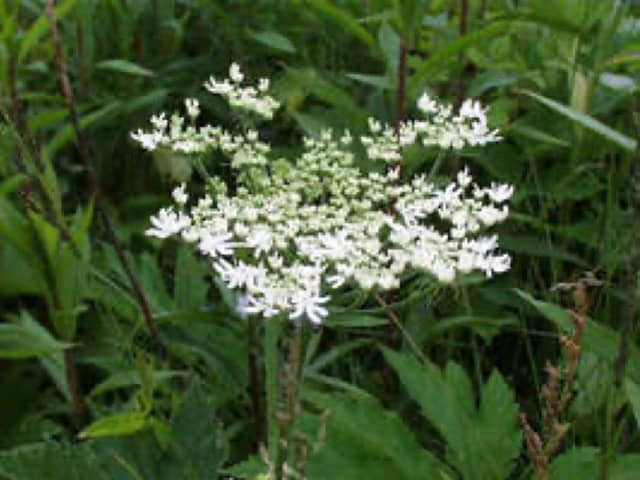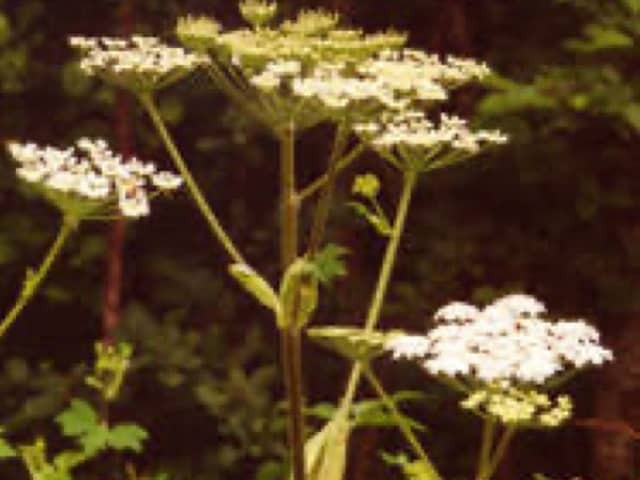Main menu
Common skin conditions

NEWS
Join DermNet PRO
Read more
Quick links
Author: Hon A/Prof Marius Rademaker, Dermatologist, Hamilton, New Zealand,1999.
Common name: |
Cow parsnip or hogweed |
Botanical name: |
Heracleum spondylium |
Family: |
It belongs to the Apiaceae family (or Umbelliferae), which has over 2500 species in 275 genera. These include common herbs such as giant hogweed, anise, carrot, celery, coriander, dill, fennel, parsley, and parsnip, as well as the highly toxic hemlocks. |
Origin: |
Native to North America. |
Description: |
The Apiaceae family are characterised by alternate leaves, which widen at the base into a sheath that clasps the stem. The stems are often furrowed with the flowers usually compound, almost always concentrated in flat-topped umbels. The flowers have 5 petals, usually uneven, and 5 stamens. Seeds and fruit form below where the petals and stamen originate Some parts of the plant usually have a strong aroma, due primarily to various oils produced by the plant. |

Cow parsnip

Cow parsnip
Uses: |
Cow parsnip often grows in moist meadows, and along the borders of fields, and near ditches. Traditionally the young leaf stalks and stems were eaten like stewed celery. The leaves may be dried, burned and the ashes used as a salt substitute. Native Americans of the northern US ate the peeled stalks raw or cooked. The blossoms were steeped in oil and rubbed on the body to keep off flies and mosquitoes. |
Allergens: |
Furocoumarins (psoralens) including bergapten, isobergapten, sphondin, isopimpinellin and pimpinellin. |
Allergy: |
Unfortunately, the umbilliferae contain furano-coumarins which, when exposed to sunlight, cause significant phototoxic reactions (photosensitivity). One of the more common skin reactions to cow parsnip/hogweed, is the ‘weed eaters’ or ‘strimmers’ dermatitis. When string trimmers are used to clear long grass, components of weeds are usually mulched and scattered in all directions, often coating the legs and arms of the operator. The sap of the plants then gets on the skin, and, when exposed to sunlight, gives rise to a very characteristic rash (see photo) which may persist for many months. |

String trimmers dermatitis

Phytophotodermatitis

String trimmers dermatitis
Cross reactions: |
|
Other information: |
Heracleum, is from the Latin, Herâclêus, "of or belonging to Hercules". The common name comes from its perceived similarity to the parsnip, and its appeal to cattle. |
Patch test: |